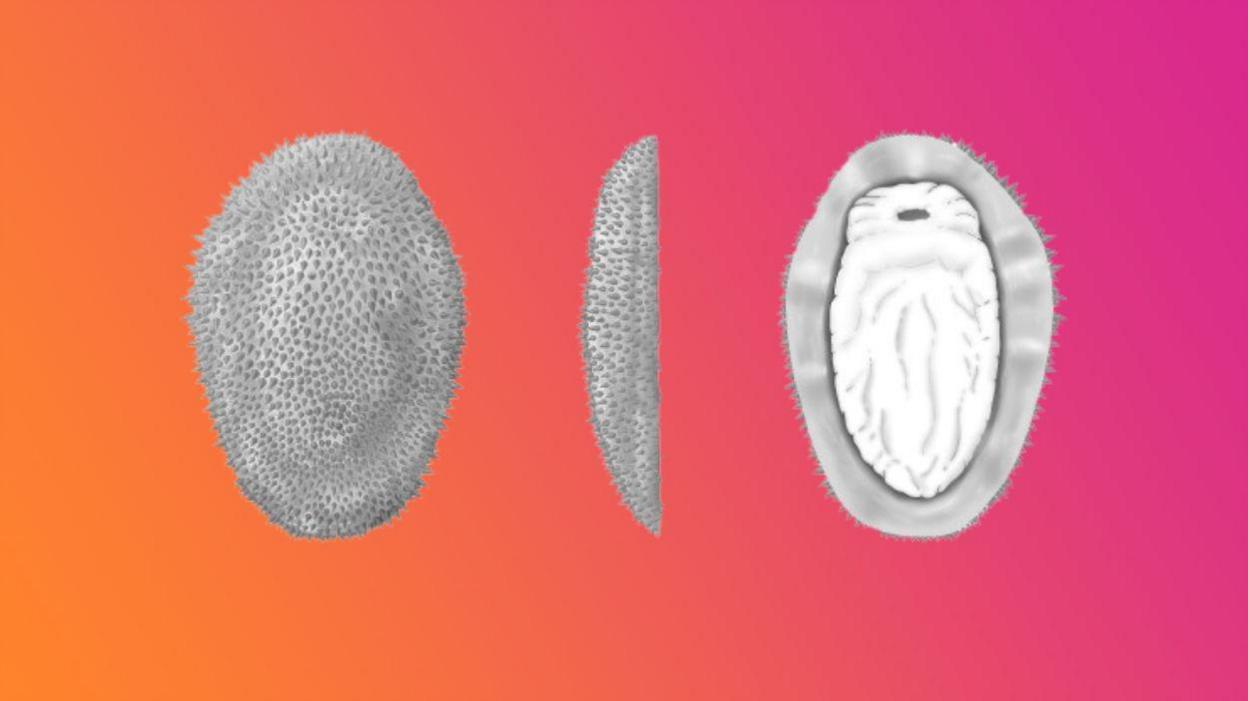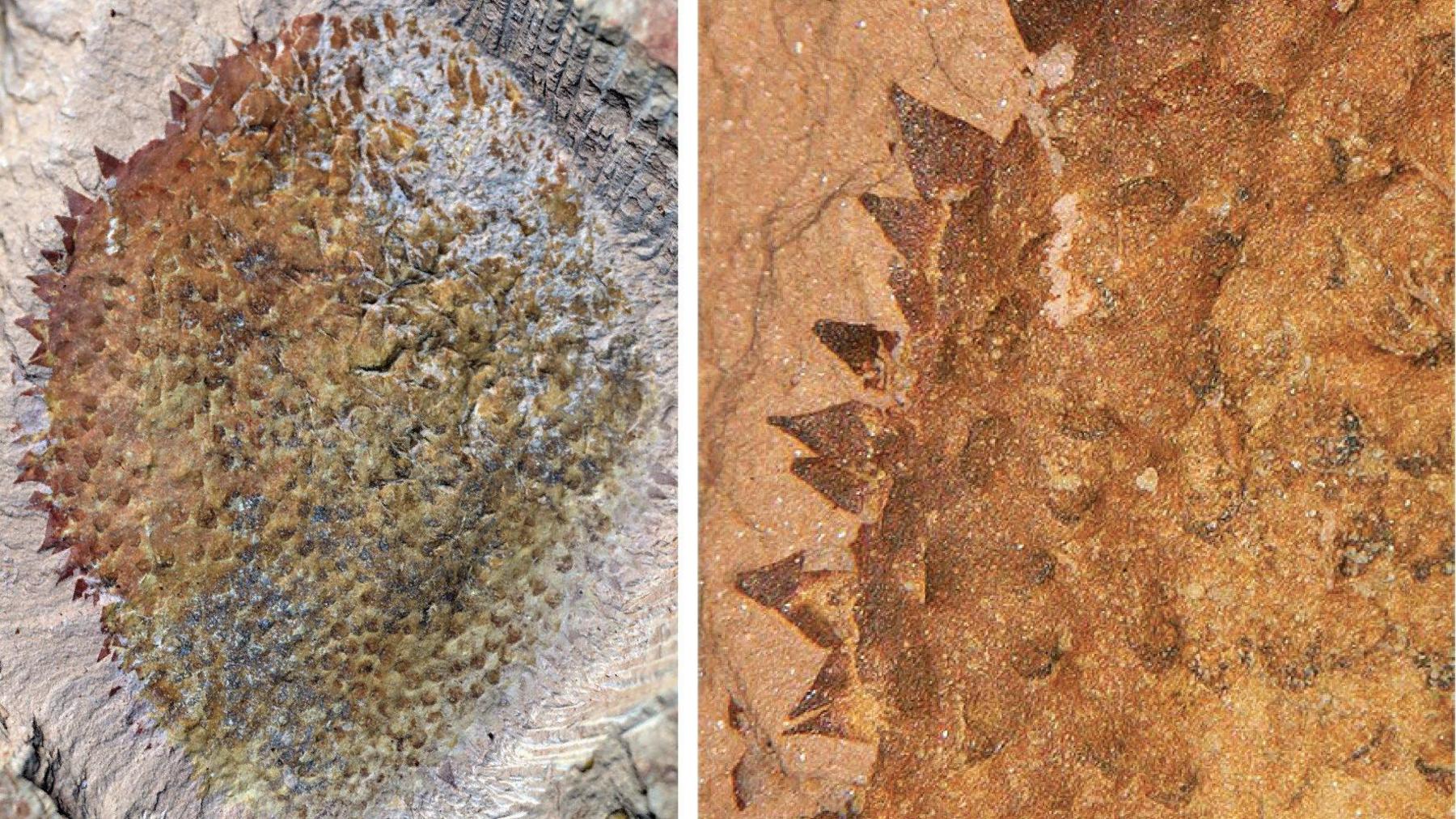Check out this 500 million-year-old spiny slug!

- Published
Scientists have discovered a new species of 'spiny' slug that lived 500 million years ago!
The ancient slug was only a few centimetres long and was covered in small spikey cones.
The fossil was initially called 'the plastic bag' because of its appearance!
Experts say the finding has helped them better understand the origins of animals like oysters and octopuses.
More like this
Forget snail mail, scientists want people to post slugs
- Published12 July 2024
'Save our slugs', say UK wildlife charities
- Published11 March 2024
'Ready, steady, slow!' Snails prepare for world championship
- Published8 July 2024
What did scientists discover?

A group of international scientists, including experts from the University of Oxford, discovered the new species in southern China.
The fossil, called Shishania aculeata, reveals that the earliest molluscs were flat, shell-less slugs covered in a protective spiny armour.
Molluscs is the name given to animals such as snails, slugs, mussels, and octopuses - which have a soft body and no spine.
Some of the fossils were preserved upside down and show that the bottom of the animal had a 'muscular foot' like that of a slug.
Experts think it would have used this to creep across the seafloor.
Guangxu Zhang from Yunnan University in China, who discovered the specimens, said the fossils were the size of his thumb and looked very unusual.
He added: "I saw under a magnifying glass that they seemed strange, spiny, and completely different from any other fossils that I had seen.
"When I found more of these fossils and analysed them in the lab I realised that it was a mollusc," he explained.
